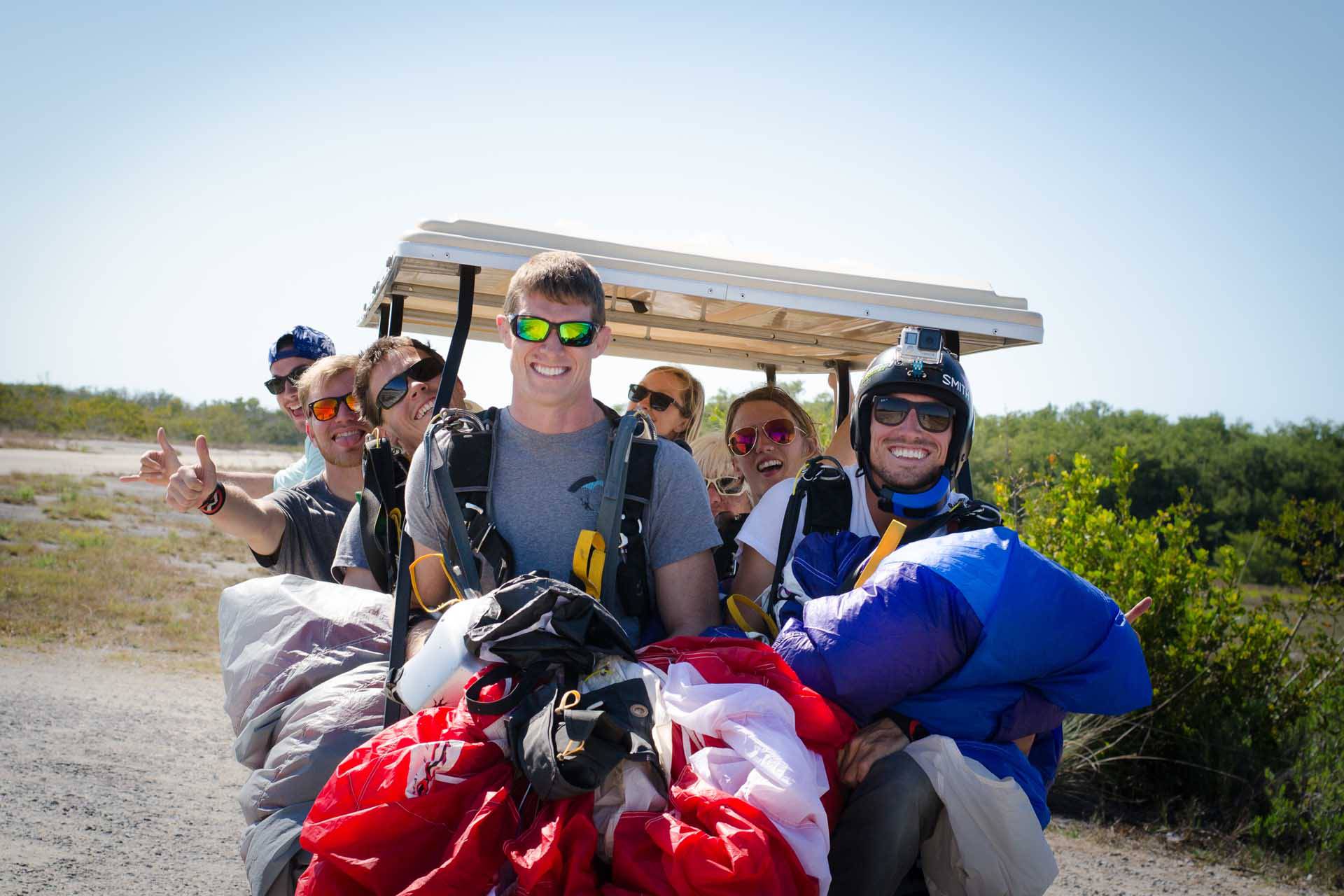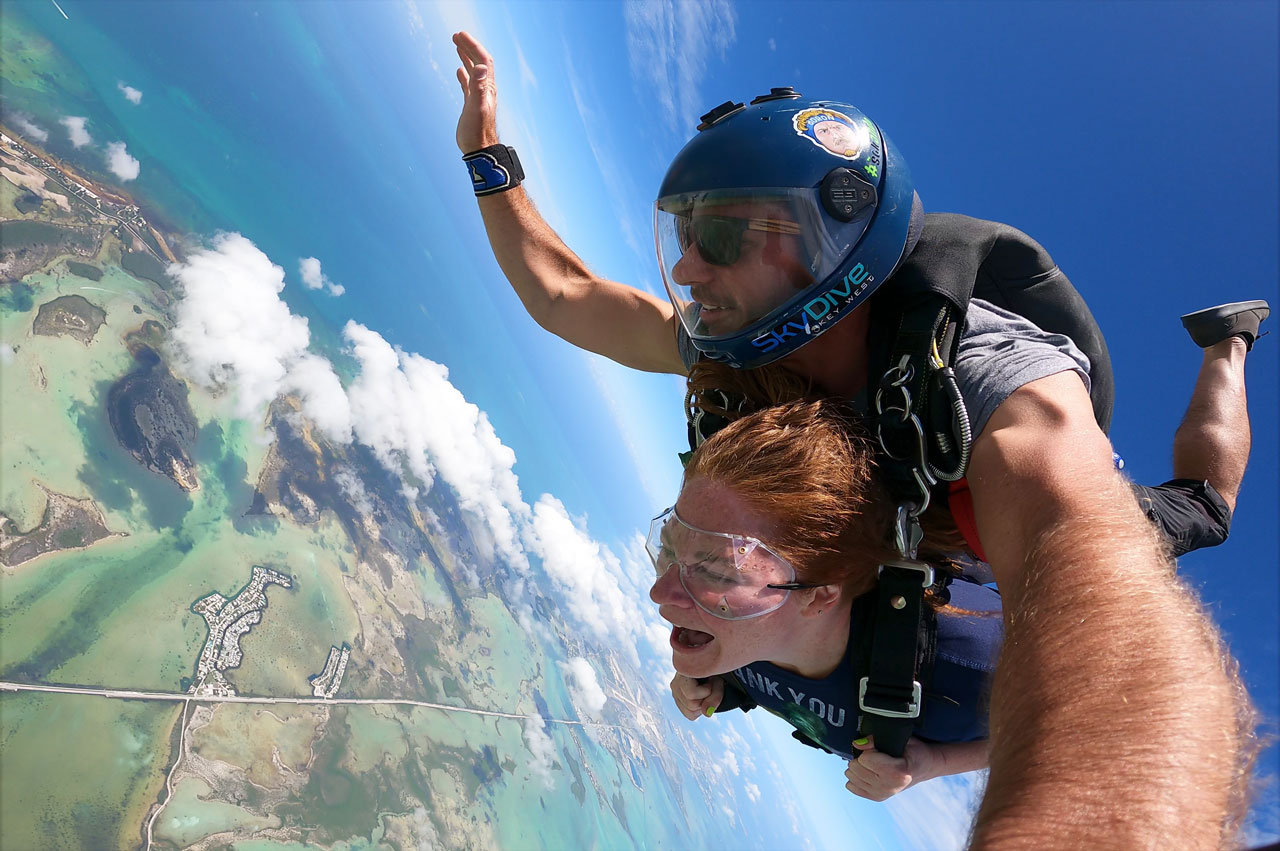What is Tandem Skydiving?
Tandem Skydiving
Posted by: Skydive Key West
5 years ago

Can Anyone Skydive?
Skydiving is one of the world’s most thrilling sports, and many people are familiar with it from TV, movies, and live demonstrations at fairs, airshows, and similar events. However, a majority undoubtedly think it is something only military personnel or extreme sport athletes can experience.
This is correct when it comes to solo freefall skydiving – it’s an activity that requires extensive training and guided jump experience along with formal testing and certification. However, since the 1980s, an adapted form called tandem skydiving has made it possible for almost anyone to enjoy the excitement of this great sport at low cost and with as little as 20 minutes of training time.
What Is Tandem Skydiving?
Tandem skydiving involves jumping from an airplane together with a specially certified instructor. The passenger is attached to the instructor and both ride down under a single large parachute designed to handle the extra weight. The instructor maintains full control over all aspects of the jump while the tandem passenger, outside of making small body position adjustments requested by the instructor, simply enjoys the ride.
The history of parachuting includes scattered reports of two-person jumps, and expert skydivers began experimenting with tandem jumps at least as early as the mid-1960s. Stories tell of very experienced skydivers using their own parachute harness to carry children and other small people along on a jump.
By the 1980s, leading gear designer/skydivers were working on developing equipment that would allow a skydiver to make a safe, comfortable jump and landing together with a passenger strapped into a specialized harness system. Nowadays, thousands of people every year get an introduction to skydiving by doing a tandem jump.

The Gear
A tandem skydive parachute system has two parts: the parachute container and harness that the instructor wears, and a separate passenger harness. The passenger harness has four large stainless-steel hooks, one for each shoulder and leg, that allow it to be attached to the instructor’s harness.
All components of both the main chute container harness and the passenger harness have been designed, built, and extensively tested for safety, durability, and comfort. In fact, many aspects of parachute harness development have been carried out by the military, and the gear has been proven to work correctly and safely under the toughest conditions.
The passenger harness has several adjustment points, allowing for a perfect, secure fit to different body sizes with no worries about slipping or binding. Padding in key areas relieves any pressure points. The instructor makes all necessary adjustments and carefully checks the fit as part of the jump preparation routine.
A modern tandem harness system positions the passenger’s back against the instructor’s chest, head slightly below the instructor’s. Top-quality systems like the United Parachute Technologies Sigma tandem system used at Skydive Key West allow the pair of jumpers to freefall in an optimum head-high position then finish the jump under the canopy in total control and comfort.
Take the Leap!
Now you know the basics of tandem skydiving. If you have additional questions about weight limits, age requirements, or what to wear on your skydive, we suggest visiting our Skydiving FAQ page.
However, the best way to learn more while having an unforgettable adventure is to come on out to Skydive Key West and give it a try yourself. We’re just minutes north of Key West in the beautiful Florida Keys. Book your online or call (305) 396-8806 with any questions.




